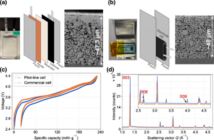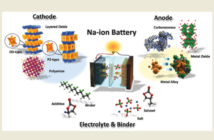Spintronics is an emerging field of technology, where devices work by manipulating the spin of electrons rather than their charge. The field can bring significant advantages to computer technology, combining higher speeds with lower energy consumption.
Spintronic circuits require the ability to control electron spin without interference from electron charge. Scientists at EPFL, working with Université Paris-Sud and Paul Scherrer Institut, have discovered that a common insulating material behaves as a perfect spintronic conductor because it is not affected by background electron charge.
Additionally, the material’s properties make it an ideal platform for directly observing a strange subatomic particle that could one day lead to a different, more stable type of quantum computers.
Spintronics, spin-transport or spin-based electronics, is a technology that exploits a quantum property of electrons called spin. Although difficult to describe in everyday terms, electron spin can be loosely compared to the rotation of a planet or a spinning top around its axis.
Spin exists in one of two different directions, “up” or “down”, which can be described respectively as the clockwise or counter-clockwise rotation of the electron around its axis. Ultimately, spin is what gives electrons their magnetic properties, influencing the way they behave when they enter a magnetic field.
The opposing directions of electron spin can be used to encode information, similar to the binary code used in digital communication. Spintronics can therefore open up a new generation of devices that combine conventional microelectronics with spin-dependent effects. This allows today’s electronics to overcome their limitations in speed and energy consumption.
Being able to control electron spin is the main challenge, being able to turn it “up” or “down” as needed. This can be achieved with certain materials, but the problem is that these are often susceptible to interference from the charge of electrons.
Perfect material for spintronics
The team of Hugo Dil at EPFL, working in conjunction with scientists from Paris and the PSI, has shown that a transparent insulating material, which normally doesn’t conduct electrical charge, shows spin-dependent properties.
The scientists used a method called SARPES, which has been perfected by Hugo Dil’s group. The data showed that the electron gas at the surface of strontium titanate (SrTiO3) is spin-polarized, which means that it could be used to control the spin of electrons.
“This is interesting because it is the first evidence of a large spin polarization effect on a truly insulating substrate,” says Hugo Dil. The discovery has significant implications for the future of spintronics, because it can lead to the development of spin-polarized materials that are not susceptible to interference from non spin-polarized electrical charge, allowing for finer and better control of electron spin.
At UPS Battery Center, our goal isn’t to only sell batteries, we want to inform and teach you about the amazing world of batteries, electricity and energy. Please check back for more interesting, helpful and informative articles about batteries and electricity.
Related Articles:
Superconducting Computer Chips with Increased Energy Efficiency
An Advanced Power-Conversion Switch Helps Upgrade U.S. Power Grid
A Nuclear Battery is being Developed




